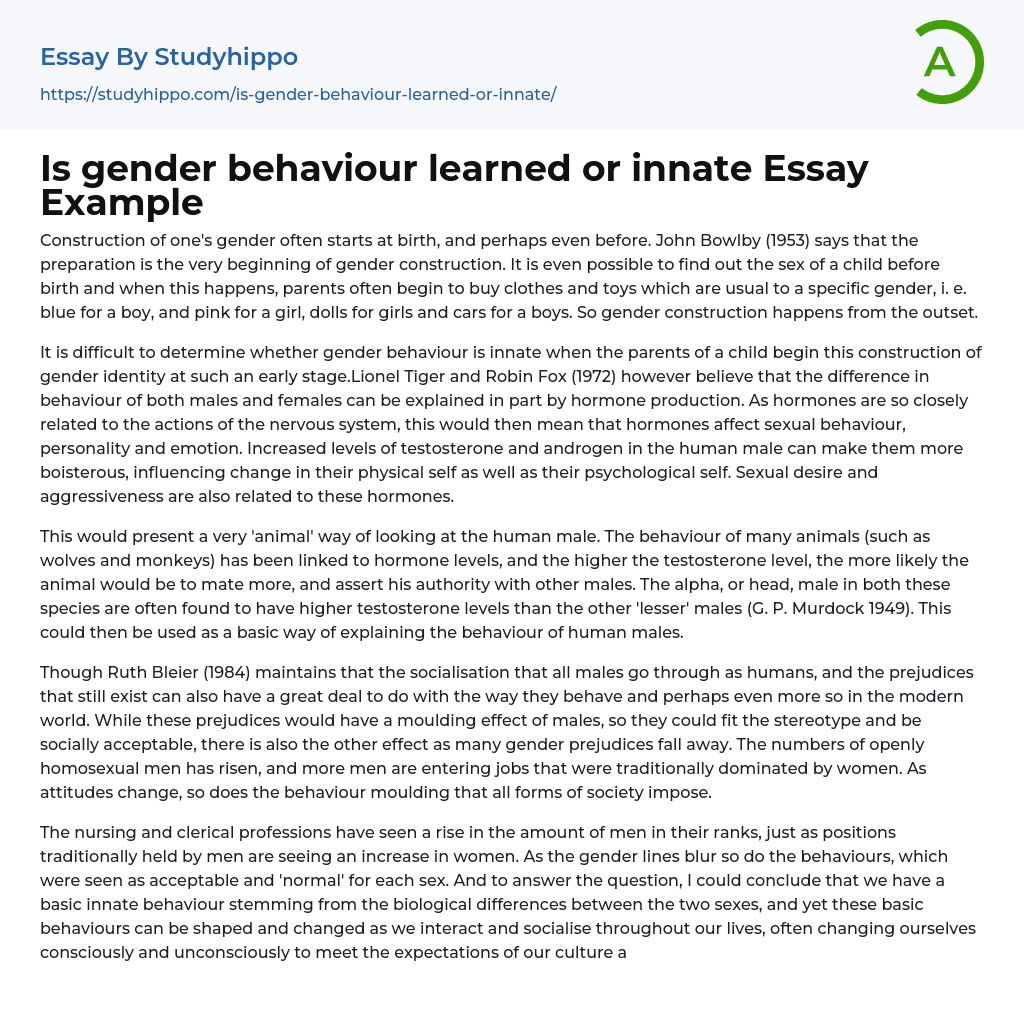Gender construction begins early in life, even before birth, according to John Bowlby (1953). A child's sex can be determined prenatally, leading parents to buy gender-specific clothing and toys such as blue for boys, pink for girls, dolls for girls, and cars for boys. Thus, gender construction starts at birth and maybe even before.
The roots of gender behavior are unclear, with the influence of parents in shaping a child's gender identity from an early stage being significant. However, Lionel Tiger and Robin Fox (1972) contend that differences in male and female behavior can be partially attributed to hormone production. Hormones have a close relationship with the nervous system, indicating that hormones impact sexual behavior, emotions, and personality. High testosterone and androgen levels in males may lead to impulsivity, resulting in both physical and psychological transformations. These hormones are
...also linked to sexual desire and aggression.
Using an 'animal' perspective to analyze human males, we can draw connections to the behavior of animals such as wolves and monkeys. Studies have suggested that hormone levels, specifically testosterone, may influence mating patterns and the assertion of dominance among males. In both species, the alpha or dominant male tends to have higher testosterone levels compared to subordinate males (G. P. Murdock 1949). Thus, this theory may serve as a rudimentary explanation for male behavior in humans.
According to Ruth Bleier (1984), the way males are socialized and the persistence of prejudices can greatly influence their behavior, especially in today's world. Although some gender biases may shape males to fit societal norms, others may break free from them as more men openly identify as homosexual and enter female-dominated professions. As society's attitudes
evolve, the ways in which all societies shape behaviors will also change.
Both the nursing and clerical professions are experiencing a surge in male representation, while traditionally male-dominated roles are increasingly occupied by women. This trend towards gender diversity has led to a blurring of accepted societal behaviours based on gender. While there may be innate behavioural differences between men and women due to biological factors, these behaviours can be altered and adapted through socialization and cultural norms throughout our lives, often shaping our conscious and subconscious behaviour to meet the expectations of society.
- Social Construction of Gender essays
- Boy essays
- Gay essays
- Gender essays
- Gender Identity essays
- Gender Roles In Society essays
- Gender Stereotypes essays
- Girl essays
- Homosexuality essays
- Human Sexual Behavior essays
- Lgbt essays
- Man essays
- Masculinity essays
- Sexual Orientation essays
- Transgender essays
- Woman essays
- Caste System essays
- Citizenship essays
- Civil Society essays
- Community essays
- Culture essays
- Deviance essays
- Discourse Community essays
- Female essays
- Filipino People essays
- Igbo People essays
- Indigenous Australians essays
- Indigenous Peoples essays
- Men essays
- Middle Class essays
- Minority Group essays
- Modern Society essays
- Popularity essays
- Social Control essays
- Social Institution essays
- Social Justice essays
- Social Norms essays
- Social Responsibility essays
- Socialization essays
- The nation essays




